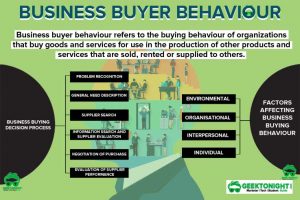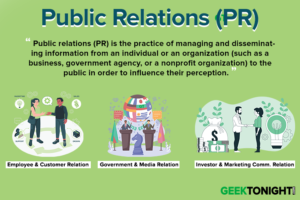The products are classified as follows:
Table of Content
Consumer Products
Consumer goods can be classified on the basis of their shopping habits. They are grouped as convenience goods, shopping goods, specialty goods and unsought goods. Consumer goods are targeted for consumption of either individuals or family members.
Convenience Goods
These are goods frequently purchased by consumers. They often buy them in frequent consumption situations and they are purchased immediately and with minimum efforts.
Examples include toiletries, soaps, cigarettes and newspapers.
These goods can be further classified as follows:
- Staple Goods: Consumer purchases on a regular basis. There is a high level of routinised response behaviour for this kind of products. Toothpaste and soaps fall under this category.
- Impulse Goods: Consumer purchases without any planning or search effort. Purchases of a magazine or a chocolate candy are examples of situations in which customers buy on impulse.
- Emergency Goods: Consumer purchases on urgent need. There is no previous decision to buy them but the consumer is forced to buy due to the emerging situation. These include the purchase of umbrella, antiseptic creams like Burnol or knife to cut down trees during the rainy season.
Shopping Goods
Shopping Goods are goods that the customer purchases by undergoing a comparative process of selection and purchase on such bases as price, psychological fitment, suitability, style and quality.
Examples include furniture, electrical appliances, home furnishings and clothing.
Shopping goods can be classified as follows:
- Homogeneous: Shopping Goods which are the goods that are similar in quantity but differ in price levels, justifying a pricing comparison by the buyer.
- Heterogeneous: Shopping Goods which are the goods, which differ in product features, and services and these differences, are more important than price for a decision.
Specialty Goods
These are goods with unique characteristics or brand identification for which the buyers need to make a special purchasing effort.
Examples include music systems, televisions, cars and men’s clothing. There is hardly any comparison in speciality goods as each brand is unique and different than others. The buyer is ready to spend more time and effort while making a purchase decision for this kind of goods.
Unsought Goods
These are goods the consumer does not know about or does not normally think of buying. These goods need advertising and more of personal selling efforts for making a sale.
Examples include life insurance products, coffins and fire alarms.
Business Products
Many of the goods coming out of a firm enter another firm’s production process, so that the final goods can be made ready for consumption by individual or family consumers.
Many of these products go to the production process as raw materials and spare parts; some of them also enter as capital items for augmenting the finished goods and the rest as consumables or supplies. These are ably supported by services targeted towards business class customers.
Following is the classification of industrial goods applicable for the purpose of product management.
Materials and Parts
These are goods that enter the manufacturer’s product completely. They are of two types namely raw materials and manufactured materials and component parts.
Raw materials can be of farm products like rice, maize, cotton, starch or natural products like fish, petroleum, gas, iron and aluminium ore.
- Farm products are renewable as they involve agricultural production.
- The natural products are very often limited and often available in great bulk and low unit value. There are a few but large producers and marketers supplying natural products.
- Long-term supply contracts are a common phenomenon in these categories, as the industry needs an uninterrupted supply of products and services for running their business process.
Manufactured materials can be classified as component materials like iron, steel, zinc and component parts like motors, printed integrated circuits.
The component materials are further fabricated like from alumina to aluminium, pig iron to steel and cloth from yarn. Components enter the final product without being changed or modified. In this case price, quality and service are important factors while making a decision.
Capital Items
Capital Items are long-lasting goods that facilitate developing or managing the finished product.
They include two groups: installations and equipment.
- Installation includes buildings, shades, offices and shop floors and heavy equipment like earthmovers, trucks, drillers, servers and mainframe computers. Installations are major purchases for the organisation.
- Equipment includes hand tools and office equipment like personal computers, laptops. These equipment are not permanent and they need to be replenished at different period of time.
Supplies and Business Services
These are short-term goods and services that facilitate managing or developing the finished product supplies.
They can be of two kinds namely maintenance and repair items and operating supplies.
Maintenance supplies include painting, nailing and operating supplies include writing papers, consumables for computer, lubricants and coal.
Business services can be classified as maintenance service like copier repair, window and glass cleaning and business advisory services include consultancy, advertising and legal services.
Reference
- V. S. Ramaswamy, S. Namakumari; 2009; Marketing Management; MacMillan Publishers Pvt Ltd.
- Kotler, Keller, Koshy, Jha; 2009; 13th Edition; Marketing Management: A South Asian Perspective.
Marketing Management Topics
Go On, Share & Tell Us What You Think!
Did we miss something in Marketing Management Tutorial or You want something More? Come on! Tell us what you think about our post on Classification of Products in the comments section and Share this post with your friends.
Marketing Management
(Click on Topic to Read)
- What Is Market Segmentation?
- What Is Marketing Mix?
- Marketing Concept
- Marketing Management Process
- What Is Marketing Environment?
- What Is Consumer Behaviour?
- Business Buyer Behaviour
- Demand Forecasting
- 7 Stages Of New Product Development
- Methods Of Pricing
- What Is Public Relations?
- What Is Marketing Management?
- What Is Sales Promotion?
- Types Of Sales Promotion
- Techniques Of Sales Promotion
- What Is Personal Selling?
- What Is Advertising?
- Market Entry Strategy
- What Is Marketing Planning?
- Segmentation Targeting And Positioning
- Brand Building Process
- Kotler Five Product Level Model
- Classification Of Products
- Types Of Logistics
- What Is Consumer Research?
- What Is DAGMAR?
- Consumer Behaviour Models
- What Is Green Marketing?
- What Is Electronic Commerce?
- Agricultural Cooperative Marketing
- What Is Marketing Control?
- What Is Marketing Communication?
- What Is Pricing?
- Models Of Communication
Sales Management
- What is Sales Management?
- Objectives of Sales Management
- Responsibilities and Skills of Sales Manager
- Theories of Personal Selling
- What is Sales Forecasting?
- Methods of Sales Forecasting
- Purpose of Sales Budgeting
- Methods of Sales Budgeting
- Types of Sales Budgeting
- Sales Budgeting Process
- What is Sales Quotas?
- What is Selling by Objectives (SBO)?
- What is Sales Organisation?
- Types of Sales Force Structure
- Recruiting and Selecting Sales Personnel
- Training and Development of Salesforce
- Compensating the Sales Force
- Time and Territory Management
- What Is Logistics?
- What Is Logistics System?
- Technologies in Logistics
- What Is Distribution Management?
- What Is Marketing Intermediaries?
- Conventional Distribution System
- Functions of Distribution Channels
- What is Channel Design?
- Types of Wholesalers and Retailers
- What is Vertical Marketing Systems?
Marketing Essentials
- What is Marketing?
- What is A BCG Matrix?
- 5 M'S Of Advertising
- What is Direct Marketing?
- Marketing Mix For Services
- What Market Intelligence System?
- What is Trade Union?
- What Is International Marketing?
- World Trade Organization (WTO)
- What is International Marketing Research?
- What is Exporting?
- What is Licensing?
- What is Franchising?
- What is Joint Venture?
- What is Turnkey Projects?
- What is Management Contracts?
- What is Foreign Direct Investment?
- Factors That Influence Entry Mode Choice In Foreign Markets
- What is Price Escalations?
- What is Transfer Pricing?
- Integrated Marketing Communication (IMC)
- What is Promotion Mix?
- Factors Affecting Promotion Mix
- Functions & Role Of Advertising
- What is Database Marketing?
- What is Advertising Budget?
- What is Advertising Agency?
- What is Market Intelligence?
- What is Industrial Marketing?
- What is Customer Value
Consumer Behaviour
- What is Consumer Behaviour?
- What Is Personality?
- What Is Perception?
- What Is Learning?
- What Is Attitude?
- What Is Motivation?
- Segmentation Targeting And Positioning
- What Is Consumer Research?
- Consumer Imagery
- Consumer Attitude Formation
- What Is Culture?
- Consumer Decision Making Process
- Consumer Behaviour Models
- Applications of Consumer Behaviour in Marketing
- Motivational Research
- Theoretical Approaches to Study of Consumer Behaviour
- Consumer Involvement
- Consumer Lifestyle
- Theories of Personality
- Outlet Selection
- Organizational Buying Behaviour
- Reference Groups
- Consumer Protection Act, 1986
- Diffusion of Innovation
- Opinion Leaders
Business Communication
- What is Business Communication?
- What is Communication?
- Types of Communication
- 7 C of Communication
- Barriers To Business Communication
- Oral Communication
- Types Of Non Verbal Communication
- What is Written Communication?
- What are Soft Skills?
- Interpersonal vs Intrapersonal communication
- Barriers to Communication
- Importance of Communication Skills
- Listening in Communication
- Causes of Miscommunication
- What is Johari Window?
- What is Presentation?
- Communication Styles
- Channels of Communication
- Hofstede’s Dimensions of Cultural Differences and Benett’s Stages of Intercultural Sensitivity
- Organisational Communication
- Horizontal Communication
- Grapevine Communication
- Downward Communication
- Verbal Communication Skills
- Upward Communication
- Flow of Communication
- What is Emotional Intelligence?
- What is Public Speaking?
- Upward vs Downward Communication
- Internal vs External Communication
- What is Group Discussion?
- What is Interview?
- What is Negotiation?
- What is Digital Communication?
- What is Letter Writing?
- Resume and Covering Letter
- What is Report Writing?
- What is Business Meeting?
- What is Public Relations?
Business Law
- What is Business Law?
- Indian Contract Act 1872
- Essential Elements of a Valid Contract
- Types of Contract
- What is Discharge of Contract?
- Performance of Contract
- Sales of Goods Act 1930
- Goods & Price: Contract of Sale
- Conditions and Warranties
- Doctrine of Caveat Emptor
- Transfer of Property
- Rights of Unpaid Seller
- Negotiable Instruments Act 1881
- Types of Negotiable Instruments
- Types of Endorsement
- What is Promissory Note?
- What is Cheque?
- What is Crossing of Cheque?
- What is Bill of Exchange?
- What is Offer?
- Limited Liability Partnership Act 2008
- Memorandum of Association
- Articles of Association
- What is Director?
- Trade Unions Act, 1926
- Industrial Disputes Act 1947
- Employee State Insurance Act 1948
- Payment of Wages Act 1936
- Payment of Bonus Act 1965
- Labour Law in India
Brand Management






